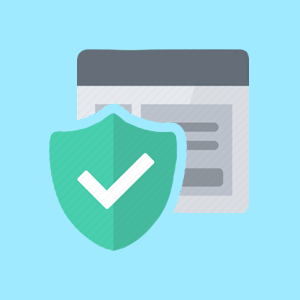 Application security is a critical concern for individuals and organizations alike. As technology continues to advance, applications have become an integral part of our daily lives, serving various purposes from communication and productivity to entertainment and commerce. However, as applications become more prevalent, they also become more vulnerable to various threats, making robust application security a paramount necessity.
Application security is a critical concern for individuals and organizations alike. As technology continues to advance, applications have become an integral part of our daily lives, serving various purposes from communication and productivity to entertainment and commerce. However, as applications become more prevalent, they also become more vulnerable to various threats, making robust application security a paramount necessity.
This article delves into the world of application security, emphasizing its importance, detailing major threats, exploring prevention strategies, discussing recovery methods, and highlighting third-party tools to bolster your application’s security.
The Importance of Application Security
- Protecting Data Privacy: Applications often handle sensitive user data, such as personal information, financial details, and credentials. A breach can result in identity theft, financial loss, and reputational damage.
- Maintaining Trust: Users trust applications to keep their data secure. A security breach can erode trust and drive users away, causing lasting damage to a brand’s reputation.
- Compliance and Legal Obligations: Many industries have regulatory requirements for data security. Failure to comply with these regulations can lead to significant legal and financial consequences.
- Business Continuity: Applications are essential for business operations. Any disruption due to a security breach can lead to downtime, lost revenue, and productivity issues.
Major Threats to Application Security
- Malware and Viruses: Malicious software can infect an application, compromising its functionality and data integrity.
- SQL Injection: Attackers exploit vulnerabilities in input fields to manipulate databases, potentially gaining unauthorized access to sensitive data.
- Cross-Site Scripting (XSS): Attackers inject malicious scripts into web applications, which are then executed by users’ browsers, potentially leading to data theft or unauthorized actions.
- Distributed Denial of Service (DDoS): Attackers flood an application’s servers with traffic, overwhelming them and causing service disruptions.
- Authentication and Authorization Vulnerabilities: Weak authentication and authorization mechanisms can allow unauthorized access to applications and data.
- Insecure APIs: APIs (Application Programming Interfaces) provide a gateway for attackers to access applications and data. Insecure APIs can lead to data breaches.
Preventing Security Breaches
- Code Review and Testing: Conduct regular code reviews and testing, including static and dynamic analysis, to identify and rectify vulnerabilities during the development phase.
- Secure Coding Practices: Train developers in secure coding practices, emphasizing input validation, secure session management, and avoiding hard-coded credentials.
- Authentication and Authorization: Implement strong authentication mechanisms and role-based access control to ensure that only authorized users can access specific functions and data.
- Web Application Firewall (WAF): Deploy a WAF to filter and monitor incoming traffic, identifying and blocking malicious requests.
- Regular Patching and Updates: Keep all software components, libraries, and frameworks up-to-date to patch known vulnerabilities.
Recovering from Security Breaches
- Incident Response Plan: Develop an incident response plan to outline the steps to take in case of a security breach, including communication, containment, eradication, and recovery.
- Isolation and Investigation: Isolate affected systems to prevent further damage and conduct a thorough investigation to determine the scope and impact of the breach.
- Data Restoration: If data has been compromised, restore it from backups and ensure that any vulnerabilities that led to the breach are patched.
- Communication: Notify affected parties, including customers, partners, and regulatory authorities, in compliance with relevant data breach notification laws.
Third-Party Tools for Enhanced Security
- Security Information and Event Management (SIEM) Tools: SIEM tools aggregate and analyze security data from various sources to identify and respond to security incidents.
- Web Application Firewalls (WAFs): WAFs filter and monitor incoming web traffic, providing protection against various web-based attacks.
- Vulnerability Scanning Tools: These tools scan your applications and networks for vulnerabilities, helping you proactively address security issues.
- Penetration Testing Services: Engage with penetration testing services to simulate real-world attacks and identify vulnerabilities in your applications.
- Identity and Access Management (IAM) Solutions: IAM solutions help manage user identities, access control, and authentication, ensuring only authorized users can access your applications.
Conclusion
Application security is a multifaceted challenge, but it’s one that cannot be ignored in our digitally connected world. Understanding the importance of application security, recognizing the major threats, implementing prevention measures, and having a robust recovery plan are essential steps in safeguarding your applications and the sensitive data they handle. Additionally, leveraging third-party tools can significantly enhance your application security posture, helping you stay ahead of emerging threats and protecting your users’ trust.
